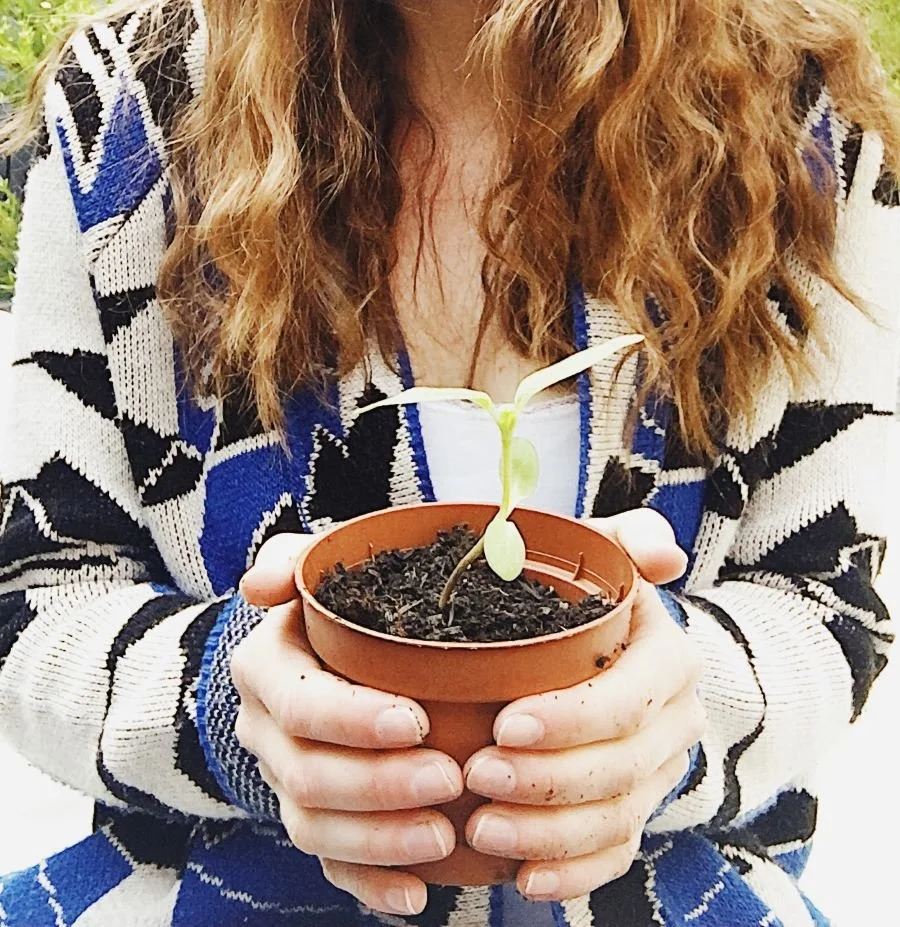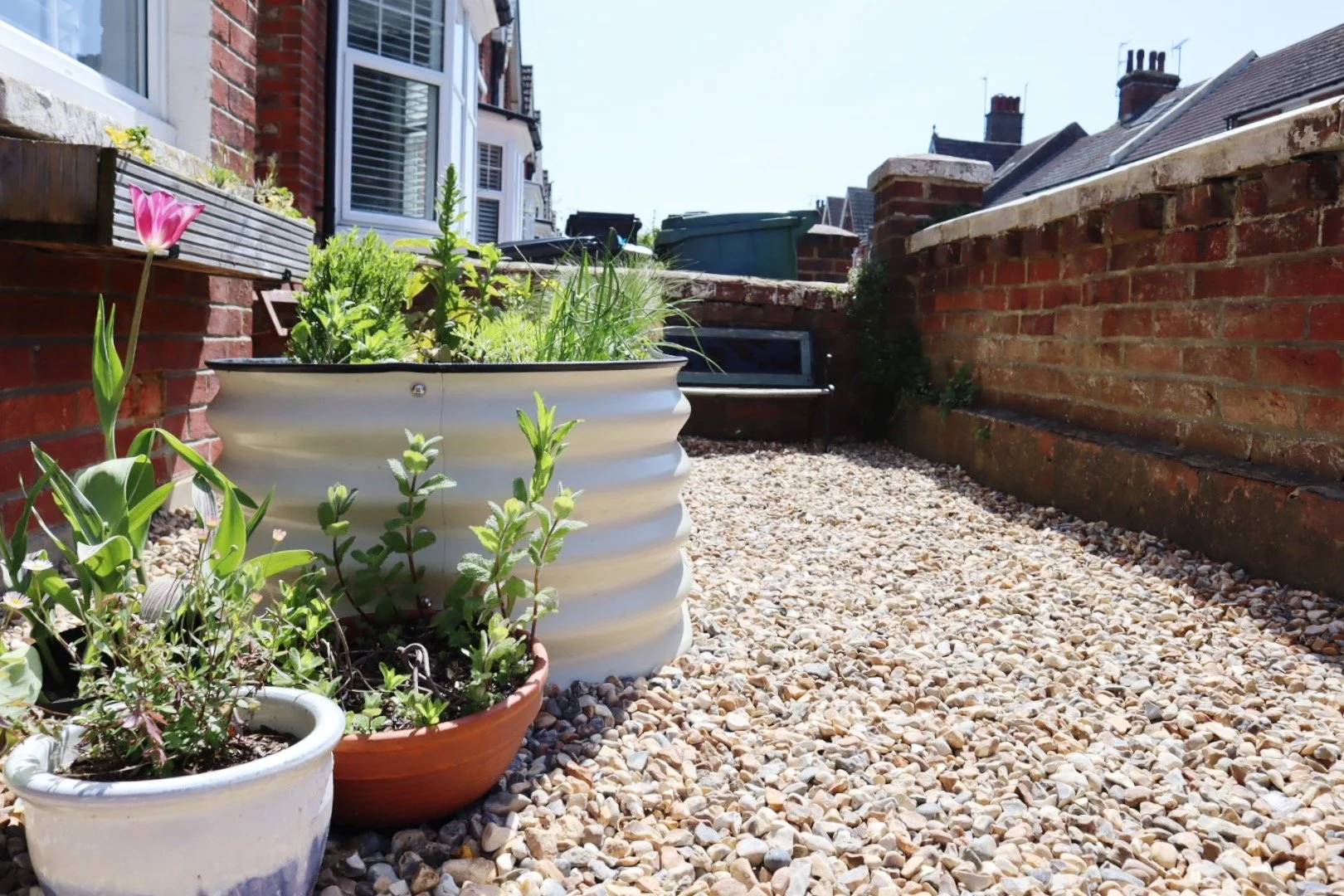The Complete Guide to Companion Planting for Beginners.
As an organic gardener I am always interested in way to increase my yields, reduce the amount of pests and introduce as much bio-diversity as possible into my garden and allotment. But if I’m honest I like doing this with as little hassle as possible. Of course, that’s because we all have limited time but also because I just don’t like things to be too complicated especially when talking to new gardeners. It can all become too overwhelming otherwise and leaves many people reaching for a bottle of insecticides or fertilisers. Something we want to avoid at all costs.
And that is why I find companion planting so interesting. It’s easy to do and has so many benefits including looking beautiful. This is my full guide to companion planting for beginners and will give you all of the knowledge you need to get started and discover exactly why you should be doing it.
What exactly is Companion Planting
Companion plant is a practice as old as time that involves placing certain plants together to create beneficial relationships between them. It is based on the idea that certain plants when grown in close proximity, can enhance each other's growth, health, and productivity. As well as help deter pests from certain plants. Companion planting takes advantage of the unique characteristics and interactions between plants to create a more balanced and productive garden ecosystem. This not only helps with organic gardening practices but increases the bio-diversity in your garden which is so important now more than ever.
It is why now traditional forms of farming with monocultures of one crop do not work on their own and therefore need the heavy use of fertilisers which in turn makes the problem worse needing more and more fertilisers and insecticides which are so badly contributing to our massive loss in biodiversity.
The benefits of companion planting include.
Pest Management: Some plants release natural compounds that repel pests, while others attract beneficial insects that prey on garden pests. By strategically planting pest-repellent and pest-attracting plants together, gardeners can reduce the need for chemical pesticides and foster a natural pest control system.
One example of companion planting that repels pests is the combination of marigolds and tomatoes.
Marigolds, specifically the variety Tagetes patula or French marigold, are known for their strong scent that repels many common garden pests, including aphids, nematodes, and whiteflies. Their root secretions can also deter harmful soil nematodes.
Tomatoes, on the other hand, are susceptible to pests like aphids and whiteflies. By planting marigolds around tomato plants, the strong scent emitted by the marigolds acts as a natural deterrent, reducing the likelihood of these pests infesting the tomatoes.
Nutrient Cycling: Companion planting can improve soil fertility by utilizing plants with different nutrient requirements. For example, nitrogen-fixing plants, such as legumes, have the ability to convert atmospheric nitrogen into a usable form for other plants. When planted alongside nitrogen-demanding plants, they can provide a natural source of nitrogen, reducing the need for synthetic fertilizers.
Personally, this is where it gets a little complicated for me and I would only use this example if I had a specific problem with something. Otherwise, I believe using no-dig principles and simply adding organic matter to your soil yearly as well as increasing bio-diversity with all of the other tips included here is enough to create healthy soil which will need little or no extra intervention.
Enhanced Pollination: Certain flowering plants attract pollinators like bees and butterflies, which are essential for fruit set and yield in many vegetable and fruit crops. By including pollinator-attracting plants in the garden, gardeners can increase pollination rates and improve overall productivity.
This not only encourages pollinators to your garden but will make you increase the pretty flowers and can transform what used to be straight lines of boring veg plots into something truly beautiful.
Shade and Support: Tall plants can provide shade and support for smaller, shade-tolerant plants. This creates microclimates within the garden, allowing a wider range of plants to thrive in different light conditions.
Disease Suppression: Some plants possess natural compounds that inhibit the growth of certain plant diseases. By interplanting disease-resistant plants with susceptible ones, gardeners can reduce the risk and spread of diseases.
An example of this would be planting basil with tomatoes to combat tomato diseases like tomato blight (caused by fungal pathogens such as Phytophthora infestans).
Basil has natural fungicidal properties and can help repel certain pests that are attracted to tomatoes. It contains compounds such as eugenol and linalool, which have antifungal and insect-repellent properties.
Bonus that tomato and basil taste great together on the plate too.
How companion planting promotes biodiversity and improves garden health
Companion planting promotes biodiversity and improves garden health through several mechanisms and interactions between plants.
As we have already talked about above planting flowers that will attract pollinators will help the yield of anything else you are growing. Companion planting can also create the perfect habitats. With a diverse array of plants, the more varied and rich a habitat is within the garden. This encourages a broader range of beneficial insects, birds, and other wildlife to visit and inhabit the garden. The increased biodiversity contributes to a more resilient ecosystem, with natural checks and balances that help maintain garden health.
Once you have attracted all the bugs and bees try to keep them there but adding things like bee hotels, wood piles and water so they can hide, breed and live better within your space.
Examples of plant combinations that demonstrate successful companion planting
There are several planting combinations that mutually benefit each other in companion planting. Here are some common examples:
Nitrogen-Fixing Plants and Heavy Feeders:
Legumes (e.g., peas, beans, or clover) are nitrogen-fixing plants that convert atmospheric nitrogen into a usable form for plants. They can be planted alongside heavy feeders like corn, tomatoes, or cabbage, which require higher nitrogen levels. The legumes provide a natural source of nitrogen to support the growth of neighbouring plants.
Pest-Repellent and Pest-Attracting Plants:
Strongly scented plants like marigolds, garlic, or onions can repel pests with their strong aroma. Planting these pest-repellent plants near susceptible crops, such as carrots or potatoes, can help deter pests like aphids or nematodes. Additionally, attracting plants like dill or fennel can lure pests away from other plants, acting as sacrificial or trap crops.
Tall and Shade-Tolerant Plants:
Tall plants like corn, sunflowers, or pole beans can provide shade for shade-tolerant plants like lettuce, spinach, or coriander. The taller plants create a microclimate of reduced light intensity, protecting the more delicate plants from excessive sun exposure and potential bolting.
Three Sisters Planting:
Three Sisters planting is a classic example of companion planting practiced by Native American tribes. It involves planting corn, beans, and squash together. Corn provides a trellis for beans to climb, while beans enrich the soil with nitrogen. The squash acts as a living mulch, suppressing weeds and retaining moisture.
Flowering Plants and Pollinator Attractors:
Planting flowering plants like lavender, marigolds, or calendula near vegetable or fruit crops attracts pollinators like bees and butterflies. The increased presence of pollinators enhances pollination rates and improves fruit set and yield. Examples include planting marigolds near tomatoes or lavender near strawberries.
Planning and Implementing Companion Planting in Your Garden
When planning your companion planting combinations, companion planting charts and resources can be of valuable references. They provide information on compatible and incompatible plant combinations, as well as the specific benefits and interactions between different plants.
Here are a few companion planting charts and resources you can consult:
The Old Farmer's Almanac Companion Planting Guide: The Old Farmer's Almanac offers a comprehensive online guide that provides information on various companion planting combinations. It includes a searchable database where you can explore specific plant pairings and their benefits.
Rodale's Basic Organic Gardening: Rodale's Basic Organic Gardening book by Deborah L. Martin features a section on companion planting. It provides useful charts and explanations of different plant combinations that work well together.
Carrots Love Tomatoes: Carrots Love Tomatoes by Louise Riotte is a popular book that explores companion planting in-depth. It covers a wide range of plant combinations and provides insights into the benefits and interactions of different plants in the garden.
Cooperative Extension Services: Many cooperative extension services and agricultural universities provide companion planting resources specific to your region. Check with your local extension office or university for downloadable guides, fact sheets, or online resources that offer information tailored to your climate and growing conditions.
Online Gardening Forums and Communities: Engaging with online gardening forums and communities or following other gardeners on Instagram for example can be a great way to learn from experienced gardeners and exchange companion planting ideas. Platforms like Reddit's gardening subreddit or gardening-focused Facebook groups often have discussions, tips, and resources shared by gardening enthusiasts.
Mobile Apps: There are also mobile apps available that provide companion planting information and resources. Apps like "Garden Compass" and "Gardenate" offer plant compatibility guides, growing tips, and customizable planting schedules.
When using companion planting charts and resources, remember that they are general guidelines, and some trial and error may be necessary to find the best combinations for your specific garden. Factors like climate and individual plant health can also impact the success of companion planting. Observing your plants and making adjustments based on your garden's unique conditions will help you fine-tune your companion planting strategies over time.
How to avoid incompatible combinations when companion planting.
To avoid incompatible combinations when companion planting, it's important to consider the specific needs and interactions of different plant species.
Here are some tips to help you avoid incompatible combinations:
Research and Refer to Companion Planting Charts: Use reliable companion planting charts or resources to identify compatible and incompatible plant combinations. These references provide information on plants that work well together and those that should be kept apart. Cross-reference multiple sources to ensure accuracy.
Understand Plant Requirements and Traits: Consider the specific requirements and growth habits of each plant. Some plants prefer different soil pH levels, light conditions, or watering schedules. Make sure the plants you plan to pair have similar environmental needs to avoid conflicts. Again I find with this one you can worry too much and I go for a more haphazard form of gardening. Take these things on board and read up if you wish but also don’t sweat too much.
Avoid Competitive Plants: Some plants can be highly competitive for resources like water, nutrients, and space. Avoid planting strong competitors together, as they may stunt each other's growth. For example, planting aggressive, spreading plants like mint alongside delicate vegetables may cause the vegetables to struggling. This is one I definately do pay attention to, and try not to plant veg too close to trees that will out do them easily for nutrients and water.
Be Mindful of Growth Habits: Take into account the growth habits and sizes of plants. Avoid planting tall or spreading plants that may shade or overwhelm smaller, sun-loving plants. Ensure each plant has enough space to grow and access to adequate sunlight.
Consider Harvesting and Plant Lifecycles: Some plants have different lifecycles or harvesting requirements. For example, if one plant needs to be harvested frequently while another requires a longer growing period, their needs may not align. Plan your combinations accordingly, considering compatible harvest and growth timelines.
Monitor Plant Health: Observe your plants regularly for signs of stress, nutrient deficiencies, or pest issues. If you notice any problems in a companion planting combination, take action promptly. It may be necessary to separate incompatible plants to prevent further issues.
Rotate Crops: Practice crop rotation to avoid planting the same species or closely related plants in the same location year after year. Rotating crops helps break pest and disease cycles and improves overall soil health. Plan your companion planting combinations with future crop rotations in mind.
Overall, companion planting fosters biodiversity by creating a diverse and interconnected web of plants, insects, and soil organisms. This diversity promotes a healthier garden ecosystem with improved pest control, pollination, nutrient cycling, disease resistance, and overall soil and plant health. By harnessing the power of companion planting, gardeners can create sustainable and thriving gardens that support a wide range of beneficial organisms and reduce reliance on synthetic inputs.
That may be a lot of take on, so like I said, take on some or all of it but also relax and enjoy the process you’ll learn as you go.




















Growing garlic organically on a no dig allotment. The best and easiest way to grow garlic.